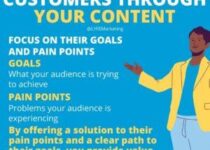Top Marketing Trends and Priorities for 2025
As digital marketing evolves, businesses must align their strategies with the most effective tools and channels to drive growth.
Based on Sagefrog’s data, here are the key trends and priorities shaping marketing and sales in 2025.
- Leading Sources for Marketing Leads
In 2025, in-person interactions are regaining dominance, with 45% of leads coming from tradeshows and events, up from 33% in 2024. Virtual events and webinars are also becoming increasingly significant, growing from 14% in 2023 to 35% in 2025.
Other notable lead sources include:
- Direct Marketing: 29% (up from 26% in 2024)
- Email Marketing: Maintains a strong position at 29%
- Directories and Sponsorships: Steady at 25%
Surprisingly, channels like organic search and search engine marketing have declined significantly compared to previous years, reflecting a shift toward more direct engagement strategies.
2. Marketing Spend Allocation
The largest share of marketing budgets in 2025 is directed toward Marketing Technology (MarTech), accounting for 54%. The emphasis on technological solutions highlights the need for efficiency and data-driven insights.
Other key areas of spend include:
- Direct Marketing: 36%
- Content Marketing: 34%
- Branding: 29%
- Artificial Intelligence: 22%, reflecting its growing role in automating and enhancing campaigns
Lower priorities for budget allocation include video marketing (2%), geofencing (1%), and SMS text messaging (1%), indicating a focus on broader-reaching tools.
3. Top Marketing and Sales Priorities
For 2025, businesses are prioritizing strategies that balance innovation with customer engagement:
- Artificial Intelligence: As AI adoption rises, marketers leverage it for personalization, predictive analytics, and chatbots.
- Account-Based Marketing (ABM): Targeted approaches to high-value accounts remain a central focus.
- Customer Relationship Management (CRM): Essential for organizing and nurturing customer interactions.
- In-Person Events: Engaging in physical networking reflects the value of building strong relationships.
- Video Marketing: The power of visual storytelling continues to grow.
- Content Creation: Quality content remains the foundation for engagement.
- Social Media: Effective for maintaining brand visibility and engagement.
- Automation: Streamlining workflows is the key to scaling campaigns.
- Marketing Collateral: Supporting sales teams with updated materials.
- Email Marketing: A reliable channel for nurturing leads and driving conversions.
Key Takeaways
- Face-to-face interactions are back (Networking): Marketers should capitalize on the return of in-person events to foster meaningful connections.
- Technology is paramount: Investments in AI, CRM, and MarTech tools will be crucial for staying competitive.
- Balanced strategies win: While technology drives efficiency, creative efforts like video and content marketing ensure strong audience engagement.
As we enter 2025, aligning with these trends will be critical for marketers aiming to drive impactful results in an ever-changing landscape.
Thanks for reading,
Kudirat Anuoluwapo.


